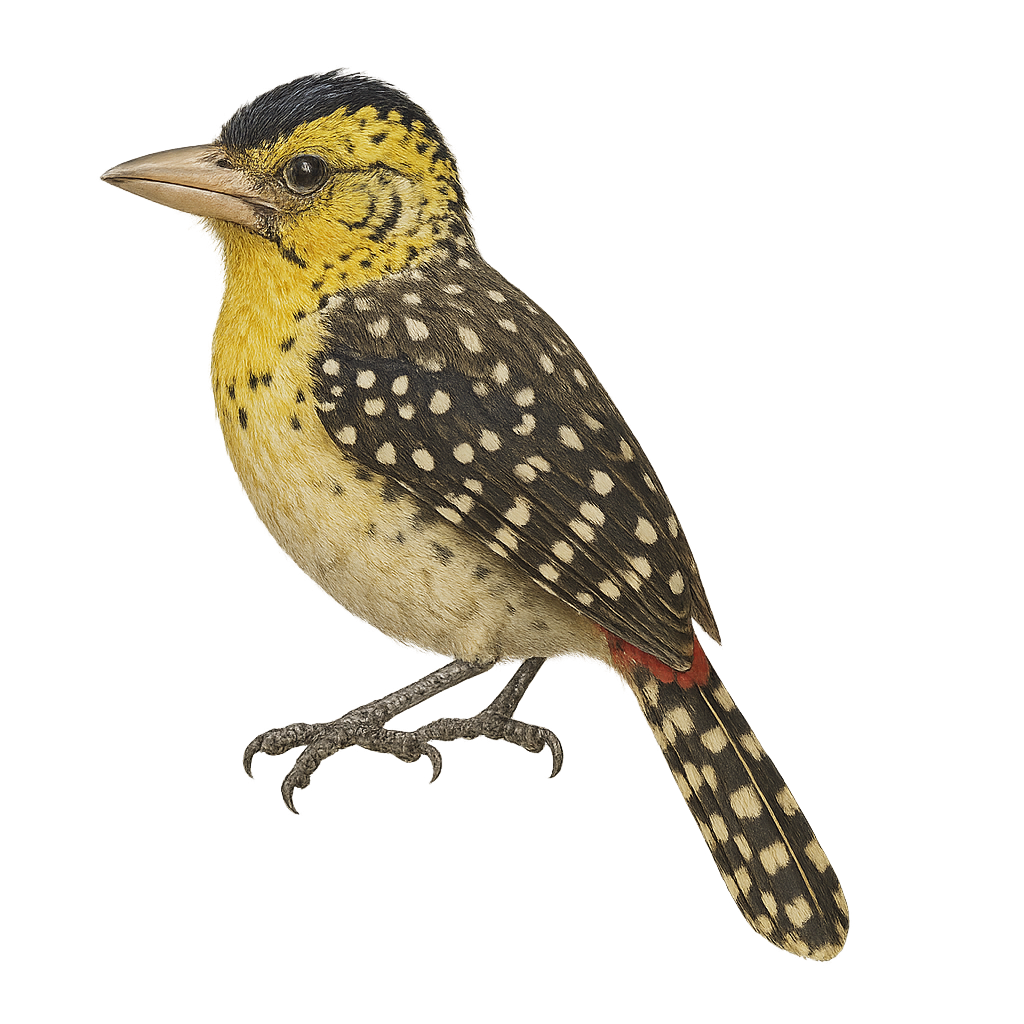Your wildlife photography guide.
Explore the d'arnaud's barbet in detail, study its behavior, prepare your shots.
Where to observe and photograph the d'arnaud's barbet in the wild
Learn where and when to spot the d'arnaud's barbet in the wild, how to identify the species based on distinctive features, and what natural environments it inhabits. The WildlifePhotographer app offers tailored photography tips that reflect the d'arnaud's barbet’s behavior, helping you capture better wildlife images. Explore the full species profile for key information including description, habitat, active periods, and approach techniques.
D'Arnaud's Barbet
Scientific name: Trachyphonus darnaudii

IUCN Status: Least Concern
Family: LYBIIDAE
Group: Birds
Sensitivity to human approach: Suspicious
Minimum approach distance: 10 m
Courtship display: February to March
Incubation: 13-15 jours
Hatchings: February to March
Habitat:
Savannas, open forests, shrublands
Activity period :
Primarily active during the day, with peak activity in the morning and late afternoon.
Identification and description:
The D'Arnaud's Barbet is a colorful and fascinating bird native to the wooded regions and savannas of East Africa. This medium-sized bird, measuring about 20 cm in length, is easily recognizable by its bright plumage, featuring shades of yellow, black, and white, with distinctive red patches on its head and neck. It is often seen in small groups or pairs, feeding mainly on insects, fruits, and seeds. The D'Arnaud's Barbet is known for its melodious and repetitive song, which it uses to mark its territory. Although relatively common in its natural habitat, it is essential to preserve its ecosystems to ensure its long-term survival.
Recommended lens:
400mm – adjust based on distance, desired framing (portrait or habitat), and approach conditions.
Photography tips:
To photograph the D'Arnaud's Barbet, it is advisable to use a telephoto lens of at least 400mm to capture detailed images without disturbing the bird. Look for it in savannas and open forests, where it is often perched on exposed branches. Be patient and discreet, as this bird can be suspicious. Take advantage of the early morning or late afternoon hours to benefit from soft, natural light that will highlight the bright colors of its plumage.
The WildlifePhotographer App is coming soon!
Be the first to explore the best nature spots, track rutting seasons, log your observations, and observe more wildlife.
Already 1 431 wildlife lovers subscribed worldwide

